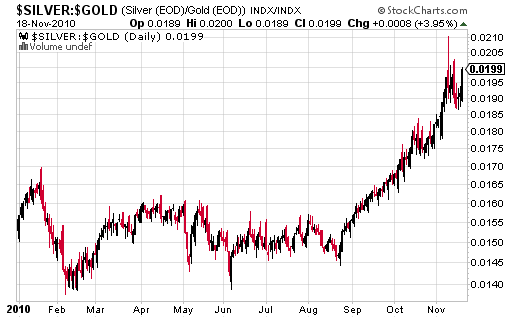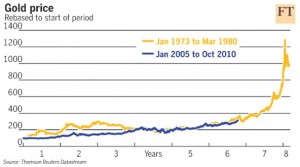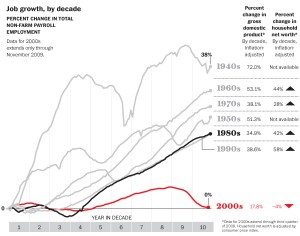Home » Asset bubble (Page 2)
Category Archives: Asset bubble
Gold bubble goes on…
When you see the gold promotion video come out that is geared toward the mass audience, such as the one below, you know gold bubble has entered another stage.
Until the Fed dramatically reverses its easy monetary policy (i.e., when the real interest rate turns positive and rising), gold price still has several legs to go. But be head clear that the gold bubble will eventually crash, just like every asset bubble. Timing in investment is utterly important.
<
Locate China’s housing bubble
Housing market tends to be local. It’s rare to see a nationwide price decline. The recent US housing bubble is an exception and often considered a black swan.
People have been talking about China’s housing bubble for a few years now (see my previous post on China’s housing bubble debate), but where exactly is the bubble located?
The recent NBER research sheds some light on the issue. The graph below shows the price-to-income ratio of China’s eight major cities, from 1999 to Q1 of 2010.
(click to enlarge, source: NBER w16189)
Beijing and Shenzhen are clearly in bubble-shape — the typical and familiar parabolic surge in price, and they are followed by Shanghai and Hangzhou.
Now, let’s have some comparative perspective. How the same ratio compares to the major cities in the United States.
The graph below (courtesy of Infectious Greed) shows the price-to-income ratio of US cities. San Francisco, Los Angeles, Seattle were among the highest.
(click to enlarge)
At the peak of the housing bubble between 2006-07, the same ratio for San Francisco, the highest among all US cities, was around 11. In contrast, Beijing has a ratio of 18, and Shenzhen at astonishing 22.
Silver – poor man’s gold
Year to date, silver price has increased by over 50%, and gold by more than 20%. The out-performance of silver relative to gold is a good indicator that gold bubble is entering a new stage, where retail investors poured in and started to grab the alternative to gold , i.e., silver, at a much cheaper price. In essence, silver has become ‘poor man’s gold’. Gold ETF (GLD) is traded around $130, while silver ETF (SLV) is traded around $25.
(click to enlarge)
The out-performance of silver started to kick in right around the Fed’s announcement in late August of their intention to ease monetary policy further. To show this, the following chart looks at the relative price between silver future contract and gold future contract, YTD.
Jereme Grantham: Fed’s policy culprit for boom and bust
Everyone should watch this video:
QE= money printing = debased dollar = asset bubbles
Interview of Jim Grant:
Gold bubble forming
I have been bullish on gold since I expected the Fed could never get the timing of exit (from the current easy monetary policy) right.
With another round of money-printing or QE2 from the Fed, gold price has been soaring in recent weeks. FT compares the surge of gold to the past asset bubbles. The crude comparison seems to indicate that gold is now in its early bubble-forming stage.
(click on the graph to play)
Like every asset bubble, the time of reckoning will eventually come. It’s fool’s game trying to get the timing right, however.
Now it has become more clear that the Fed’s super easy monetary policy is in the process of creating at least two bubbles in the world – first the gold, second is the bubble in emerging markets – remind me of Latin America crisis in 1990s.
America’s Lost Decade, part 4
This is a post following my previous posts on the same topic, see p1, p2, p3.
When discussing the issue, most people focus on GDP growth. Yes, in terms of GDP growth, in the past decade, the US still managed to grow 18%, cumulatively – that’s roughly 1.8 percent per year on average. However, in terms of employment growth, it has been a lost decade for the US (see the chart below).
(click to enlarge)
Given the economic dynamism in the US, and compare it to Japan, I have long thought the Lost Decade would never happen in America, a land full of opportunities.
I guess I need to re-visit my presumptions — Whether a big housing bubble (in the US’ case, two big bubbles in one decade) always foretells anemic economic growth afterward, as opposed to the common belief that Japan’s lost decade was largely due to policy mistakes. Maybe, in the aftermath of a big bubble, America and Japan are really not that much different – an open question.
Illusion of Chinese Bubble?
I have always been wondering whether governments, through regulation, can prevent bubbles. I tend to think this is not the case. "Smart" people (frenzy investors, investment banks, etc.) can always find loopholes and circumvent the regulation. Also remember, in democratic societies, regulations are also the bargaining outcome of various interest groups. If government can single-handedly kill the bubble, we wouldn't find any bubbles in tightly regulated economies. In fact, what we actually observe proves otherwise.
Fan Gang, a well-known economist in China, argues Chinese government has learned the lesson from Japanese bubble 20 years ago, and Chinese bubble is an illusion. (source: Project Syndicate):
BEIJING – On the eve of Chinese New Year, the People’s Bank of China (PBC) surprised the market by announcing – for the second consecutive time in a month – an increase in banks’ mandatory-reserve ratio by 50 basis points, bringing it to 16.5%. Shortly before that, China’s government acted to stop over-borrowing by local governments (through local state investment corporations), and to cool feverish regional housing markets by raising the down-payment ratio for second house buyers and the capital-adequacy ratio for developers.
This latest round of monetary tightening in China reflects the authorities’ growing concern over liquidity. In 2009, M2 money supply (a key indicator used to forecast inflation) increased by 27% year on year, and credit expanded by 34%. In January 2010, despite strict “administrative control” of financial credit lines (the PBC actually imposed credit ceilings on commercial banks), bank lending grew at an annual rate of 29%, on top of already strong expansion in the same period a year earlier. While inflation remains low, at 1.5%, it has been rising in recent months. Housing prices have also soared in most major cities.
These factors have inspired some China watchers to regard the country’s economy as a bubble, if not to predict a hard landing in 2010. But that judgment seems premature, at best.
To be sure, China may have a strong tendency to create bubbles, partly because people in a fast-growing economy become less risk-averse. Thirty years of stable growth without serious crises have made people less aware of the negative consequences of overheating and bubbles. Instead, they are so confident that they often blame the government for not allowing the economy to grow even faster.
There are also several special factors that may make China vulnerable to bubbles. China’s large state sector (which accounts for more than 30% of GDP) is usually careless about losses, owing to the soft budget constraints under which they operate. Local governments are equally careless, often failing to service their debts. In addition, various structural problems – including large and growing income disparities – are causing serious disequilibrium in the economy.
But a tendency toward a bubble need not become a reality. The good news is that Chinese policymakers are vigilant and prepared to bear down on incipient bubbles – sometimes with unpopular interventions such as the recent monetary moves.
Whatever one thinks of those measures, taking counter-cyclical policy action is almost always better than doing nothing when an economy is overheating. Whereas some policies may be criticized for being too “administrative” and failing to allow market forces to play a sufficient role, they may be the only effective way to deal with China’s “administrative entities.”
In any case, the new policies should reassure those who feared that China’s central government either would simply watch the bubble inflate or that it lacked a sufficiently independent macroeconomic policy to intervene. The consequences of burst bubbles in Japan in the 1980’s and in the United States last year are powerful reasons why China’s government has acted with such determination, while the legacy of a functioning centralized system may explain why it has proven capable of doing so decisively. After all, although modern market economics provides a sound framework for policymaking – as Chinese bureaucrats are eagerly learning – the idea of a planned economy emerged in the nineteenth century as a counter-orthodoxy to address market failures.
Some people would prefer China to move to a totally free market without regulation and management, but the recent crises have reminded everyone that free-market fundamentalism has its drawbacks, too. No one has proven able to eliminate bubbles in economies where markets are allowed to function. But if the fluctuations can be “ironed out,” as John Maynard Keynes put it, total economic efficiency can be improved.
Government investment, which represents the major part of China’s anti-crisis stimulus package, should help in this regard. Roughly 80% of the total is going to public infrastructure such as subways, railways, and urban projects, which to a great extent should be counted as long-term public goods. As such, they will not fuel a bubble by leading to immediate over-capacity in industry.
Moreover, roughly 40% of the increase in bank credit in 2009 accommodated the fiscal expansion, as projects were started prior to the budget allocations needed to finance them. Over-borrowing by local government did pose risks to the banking system and the economy as a whole, but, given China’s currently low public-debt/GDP ratio (just 24% even after the anti-crisis stimulus), non-performing loans are not a dangerous problem. Indeed, they may be easily absorbed as long as annual GDP growth remains at 8-9% and, most importantly, as long as local government borrowings are now contained.
Finally, the leverage of financial investments remains very low compared to other countries. Using bank credits to speculate in equity and housing markets is still mostly forbidden. There may be leaks and loopholes in these rules, but firewalls are in place – and are more stringently guarded than ever before.
So is a Chinese bubble still possible? Perhaps. But it has not appeared yet, and it may be adequately contained if it does.







